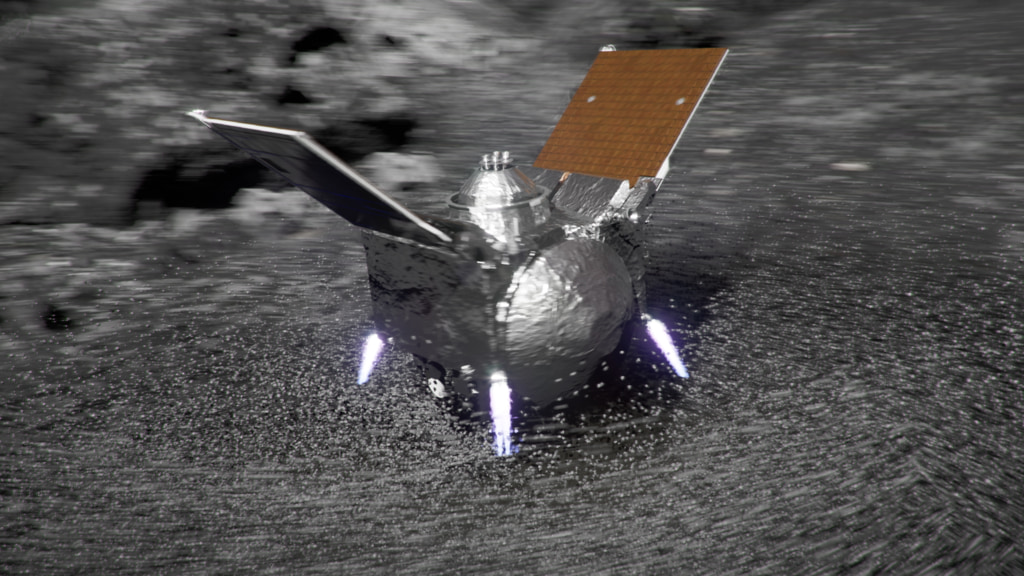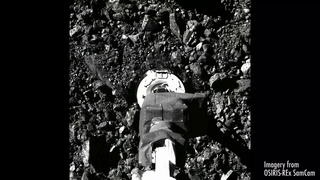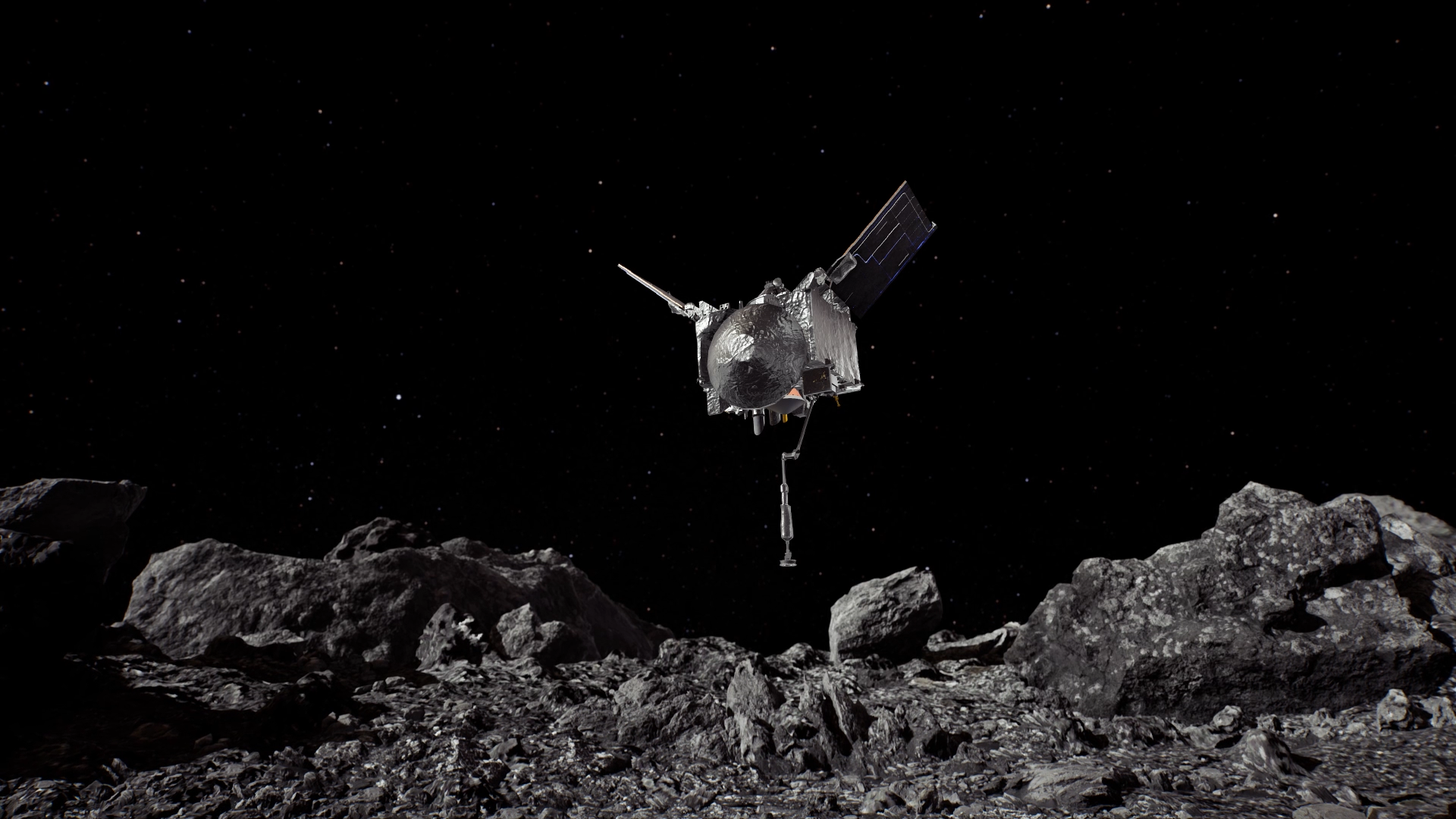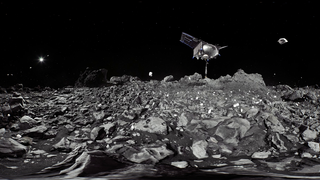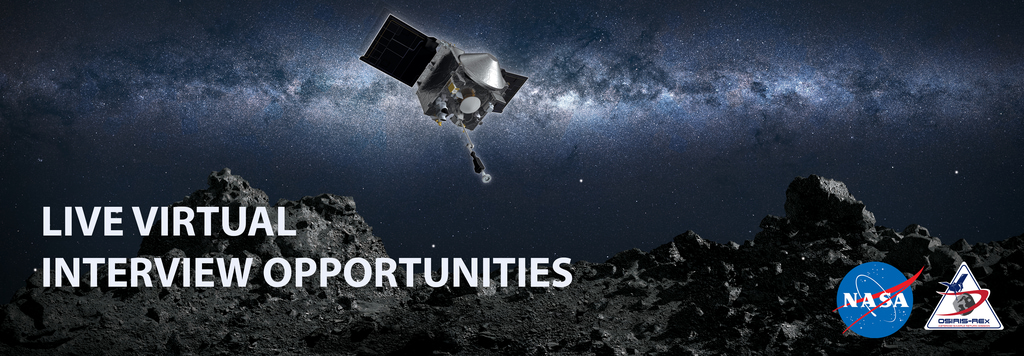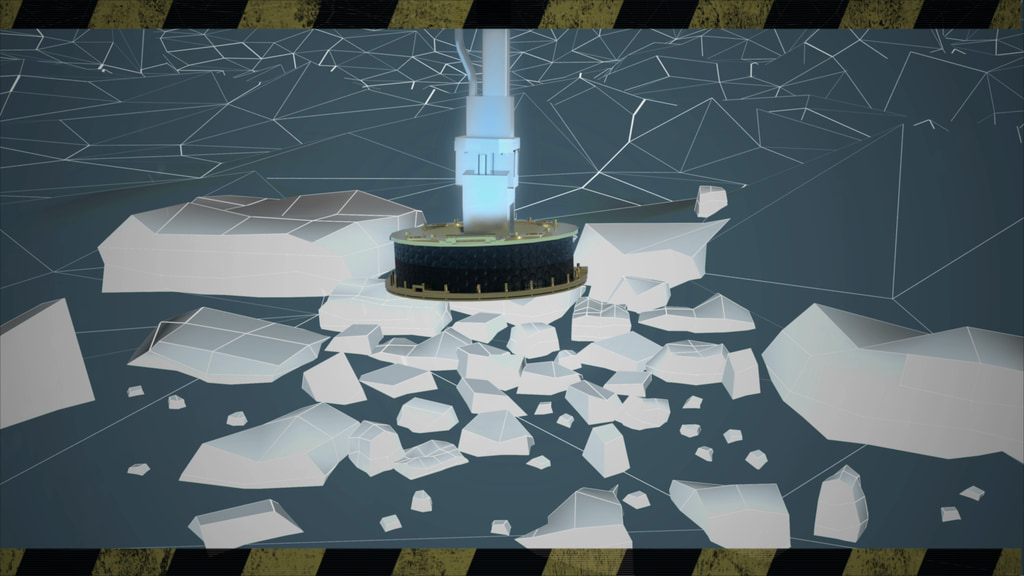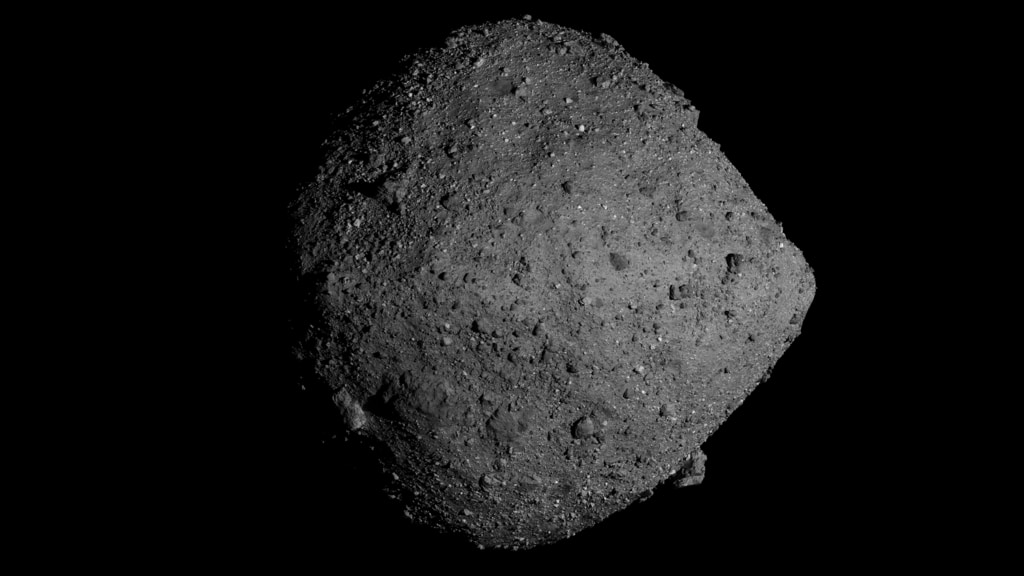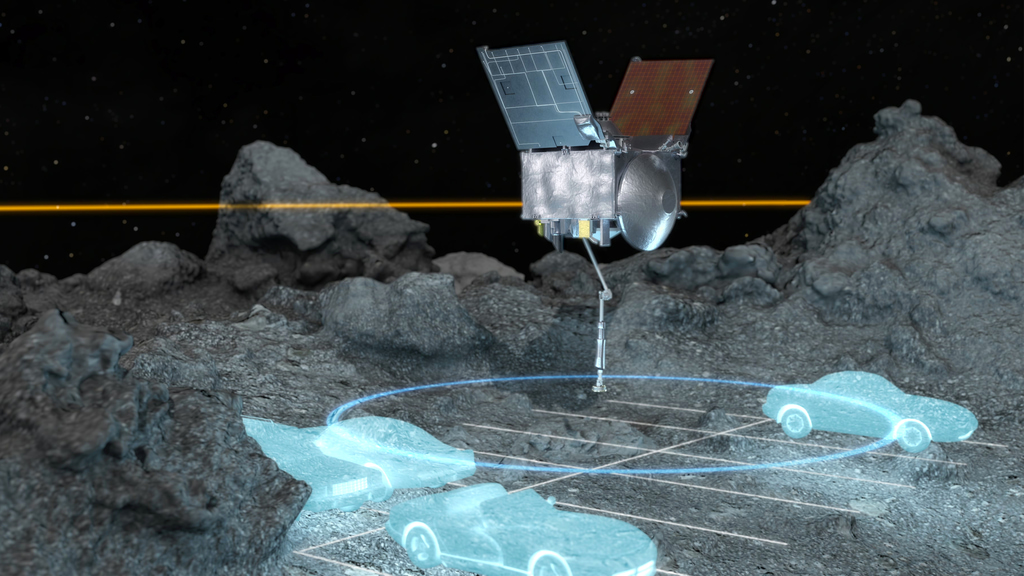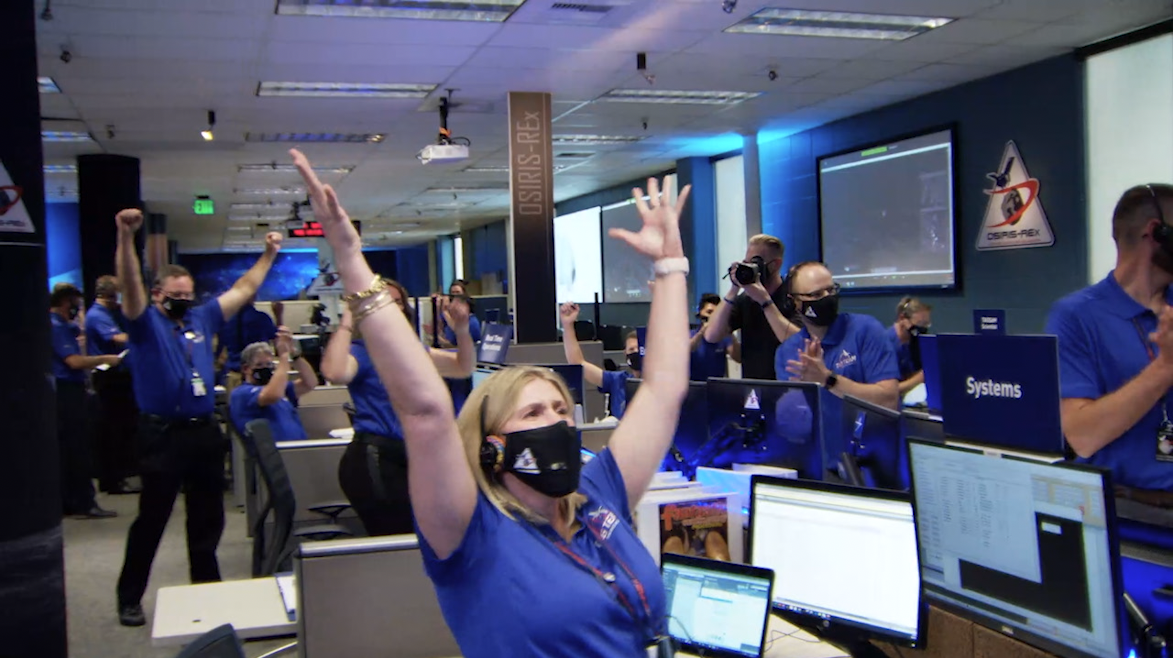NASA’s Asteroid Heist: The Challenges of TAG
NASA's Asteroid Heist: The Challenges of TAG.
Universal Production Music: "Avenger" by Max Cameron Concors; "Fight for Earth" by Peter Nickalls
Watch this video on the NASA Goddard YouTube channel.
NASA’s first asteroid sample return mission, OSIRIS-REx, will make a daring attempt to “TAG” asteroid Bennu on Oct. 20 – touch its surface and collect a sample for return to Earth. Sample site Nightingale, the mission’s targeted touch down spot, is only a few parking spaces wide and surrounded by building-sized boulders that pose a hazard to OSIRIS-REx. The spacecraft will carefully navigate down to the sample site with its sampling arm extended and touch Bennu’s surface for several seconds. Upon contact, the collector head will fire a bottle of nitrogen gas to agitate loose material, which is then caught in the spacecraft’s collector head. After this brief touch, OSIRIS-REx will fire its thrusters to back away from Bennu, navigating to a safe distance from the asteroid. The spacecraft will depart Bennu in 2021 and deliver the sample to Earth on Sep. 24, 2023.
For More Information
See the following sources:
Credits
Please give credit for this item to:
NASA's Goddard Space Flight Center
-
Producers
- Dan Gallagher (USRA)
- James Tralie (ADNET Systems, Inc.)
-
Editor
- James Tralie (ADNET Systems, Inc.)
-
Animators
- James Tralie (ADNET Systems, Inc.)
- Walt Feimer (KBR Wyle Services, LLC)
- Krystofer Kim (USRA)
- Adriana Manrique Gutierrez (USRA)
- Bailee DesRocher (USRA)
- Jacquelyn DeMink (USRA)
- Jonathan North (USRA)
- Josh Masters (Freelance)
-
Videographers
- Rob Andreoli (Advocates in Manpower Management, Inc.)
- John Caldwell (Advocates in Manpower Management, Inc.)
-
Set construction
- Chris Meaney (KBR Wyle Services, LLC)
-
Art director
- Michael Lentz (USRA)
-
Visualizers
-
Kel Elkins
(USRA)
-
Ernie Wright
(USRA)
-
Kel Elkins
(USRA)
-
Interviewees
- Nayi Castro (KBR Wyle Services, LLC)
- Michael Moreau (NASA/GSFC)
- David A. Lorenz (SGT)
-
Technical support
- Aaron E. Lepsch (ADNET Systems, Inc.)
-
Support
- Erin Morton (The University of Arizona)
- Nancy Neal-Jones (NASA/GSFC)
- Michael Starobin (KBR Wyle Services, LLC)
Missions
This page is related to the following missions:Series
This page can be found in the following series:Release date
This page was originally published on Wednesday, October 14, 2020.
This page was last updated on Wednesday, May 3, 2023 at 1:44 PM EDT.
